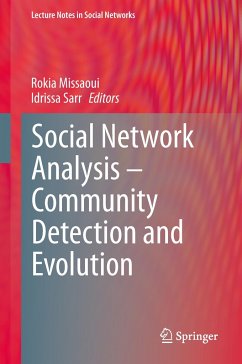
Social Network Analysis
History, Theory and Methodology
Versandkostenfrei!
Versandfertig in 6-10 Tagen
40,99 €
inkl. MwSt.
Weitere Ausgaben:

PAYBACK Punkte
20 °P sammeln!
We live in a world that is paradoxically both small and vast; each of us is embedded in local communities and yet we are only a few 'links' away from anyone else in the world.This engaging book represents these interdependencies' positive and negative consequences, their multiple effects and the ways in which a local occurrence in one part of the world can directly affect the rest. Then it demonstrates precisely how these interactions and relationships form.This is a book for the social network novice learning how to study, think about and analyse social networks; the intermediate user, not ye...
We live in a world that is paradoxically both small and vast; each of us is embedded in local communities and yet we are only a few 'links' away from anyone else in the world.
This engaging book represents these interdependencies' positive and negative consequences, their multiple effects and the ways in which a local occurrence in one part of the world can directly affect the rest. Then it demonstrates precisely how these interactions and relationships form.
This is a book for the social network novice learning how to study, think about and analyse social networks; the intermediate user, not yet familiar with some of the newer developments in the field; and the teacher looking for a range of exercises, as well as an up-to-date historical account of the field.
It is divided into three clear sections:
1. historical & Background Concepts
2. Levels of Analysis
3. Advances, Extensions and Conclusions
The book providesa full overview of the field - historical origins, common theoretical perspectives and frameworks; traditional and current analytical procedures and fundamental mathematical equations needed to get a foothold in the field.
This engaging book represents these interdependencies' positive and negative consequences, their multiple effects and the ways in which a local occurrence in one part of the world can directly affect the rest. Then it demonstrates precisely how these interactions and relationships form.
This is a book for the social network novice learning how to study, think about and analyse social networks; the intermediate user, not yet familiar with some of the newer developments in the field; and the teacher looking for a range of exercises, as well as an up-to-date historical account of the field.
It is divided into three clear sections:
1. historical & Background Concepts
2. Levels of Analysis
3. Advances, Extensions and Conclusions
The book providesa full overview of the field - historical origins, common theoretical perspectives and frameworks; traditional and current analytical procedures and fundamental mathematical equations needed to get a foothold in the field.














